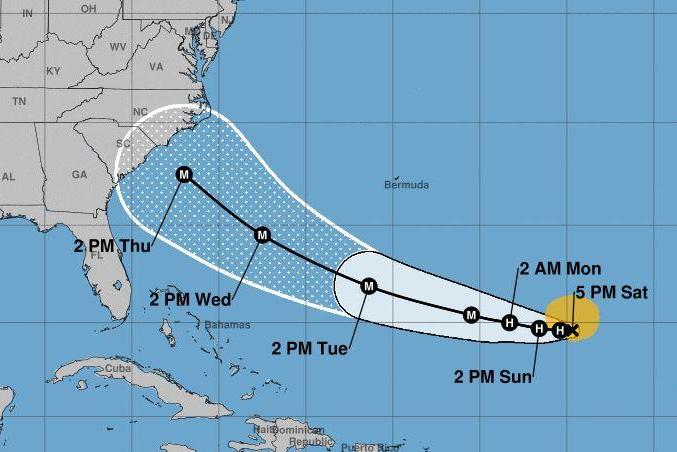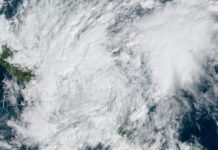Sept. 8 (UPI) — Tropical Storm Florence is expected to become a hurricane late Saturday or early Sunday and by next week could threaten the southeast U.S. coast, the National Hurricane Center said.
The storm, downgraded from a hurricane to a tropical storm Friday, is gaining strength and could become a major hurricane by Monday.
The eye of the storm was about 810 miles southeast of Bermuda and 695 miles northeast of the northern Leeward Islands as of the NHC’s latest update. The storm was traveling west at 5 mph and had maximum sustained winds of 70 mph.
Center of the storm is expected to move over the southwestern Atlantic Ocean between Bermuda and the Bahamas Tuesday and Wednesday before approaching the southeastern U.S. coast on Thursday.
“Swells generated by Florence are affecting Bermuda and are beginning to reach reach portions of the U.S. East Coast,” the hurricane center said. “These swells are likely to cause life-threatening surf and rip current conditions.”
There are currently no coastal watches or warnings in effect. Earlier this week, Florence became the first major hurricane of the 2018 Atlantic season.
The exact timing, location and magnitude of the storm’s impacts on the U.S. southeast coast in not yet clear but forecast tracks show it could make landfall along the Carolinas and southeast Georgia.
“Florence is forecast to be a dangerous major hurricane near the southeast U.S. coast by late next week, and the risk of direct impacts continues to increase,” the hurricane center said.
The NHC encouraged residents along the east coast, particularly from north Florida through North Carolina, to ensure they have a hurricane plan in place and follow advice given by local officials.
East of Florence, two systems off the African coast are organizing and could follow across the Atlantic and threaten the United States. Peak hurricane season is from mid-August to mid-October, with a peak date for the season, on average, of Sept. 10. It is the same date that Hurricane Irma struck Florida in 2017.







